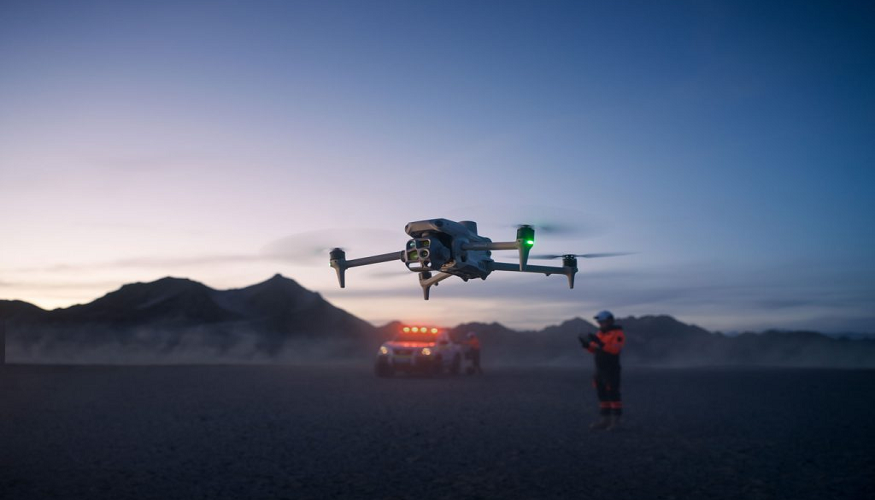General News Blog
My WordPress Blog
My WordPress Blog

Flying a drone in the UK is an exciting and increasingly popular hobby, as well as a useful tool for photography, surveying and content creation. But with the freedom to explore the skies comes a serious responsibility to fly safely and legally. Whether you’re a first-time flyer or an experienced pilot, understanding the rules and best practices is essential—not just to avoid hefty fines, but to keep others safe and protect your right to fly.
UK drone laws have evolved rapidly in recent years. The introduction of registration requirements, airspace restrictions and operational categories means pilots need to be more informed than ever. Flying responsibly helps prevent accidents, reassures the public and preserves the reputation of drone users across the country.
In the UK, drones are regulated by the Civil Aviation Authority (CAA), and all pilots must follow the rules outlined in the Drone and Model Aircraft Code. One of the most important requirements is that anyone flying a drone with a camera or weighing over 250g must be registered with the CAA. This involves passing an online theory test to obtain a Flyer ID, and registering as an operator to get an Operator ID that must be clearly displayed on the drone.
The rules apply whether you’re flying recreationally or commercially. Ignorance of the law won’t protect you from penalties—breaking drone regulations can result in fines of up to £1,000 or more, and in serious cases, prosecution.
UK airspace is divided into different zones, and not all areas are safe or legal to fly in. Restricted airspace includes zones around airports, airfields, prisons, military bases and certain government buildings. Flying in these areas without permission can result in significant fines or legal action.
Before you take off, check local airspace using tools like the CAA’s Drone Assist app or other reliable mapping services. These tools show you exactly where you can and can’t fly, and help you avoid accidental violations of controlled zones.
One of the golden rules of drone safety is to always keep your drone within visual line of sight. This means being able to see your drone with your own eyes (not just through a screen or goggles) at all times during the flight.
This rule isn’t just about avoiding loss of control—it’s about ensuring you can react to unexpected hazards like other aircraft, birds, or obstacles. Flying beyond visual line of sight without special permission is illegal and unsafe, especially in built-up or congested areas.
To reduce the risk of injury or damage, drones must be flown at least 50 metres away from people and private property, and 150 metres away from crowds, schools, and built-up areas unless you have specific authorisation. Even if your drone is lightweight or equipped with advanced sensors, getting too close can cause alarm or harm.
Always avoid flying over groups of people, busy roads, or emergency services activity. A responsible pilot plans their flight path to avoid potential risks, not just to get the best shot.
Weather plays a major role in drone safety. High winds, rain and poor visibility can quickly make flying dangerous, even for skilled operators. Before each flight, check the weather forecast for your area and pay particular attention to wind speed at altitude, as it can be significantly higher than on the ground.
If conditions look unpredictable or visibility is poor, it’s better to postpone your flight. Crashes caused by weather are often avoidable and can result in costly repairs or, worse, harm to people or animals.
A quick checklist before every flight can prevent mechanical failures and signal issues. Inspect your drone for any visible damage, ensure the propellers are securely fitted, check the battery is fully charged and correctly inserted, and confirm that your firmware is up to date.
Calibrate the compass if needed and make sure your GPS signal is strong. These steps only take a few minutes but can make the difference between a smooth flight and an avoidable crash.
Drones equipped with cameras bring privacy considerations. Filming or photographing people without their consent—particularly in their gardens, through windows or during private moments—can lead to complaints or legal action under data protection and harassment laws.
When flying in residential or public spaces, be mindful of where your camera is pointing and avoid capturing identifiable individuals unless it’s clearly part of your flight purpose and you have permission. If you’re filming for commercial use, further permissions may apply under GDPR.
Maintaining a logbook of your drone flights is not only good practice—it can be essential if you ever need to show evidence of safe flying. Note down dates, locations, weather conditions, battery cycles and any issues encountered. This is particularly useful if you fly commercially or need to support an insurance claim.
Regular logging also helps you track maintenance needs and spot patterns that could indicate wear and tear on your equipment.
Drone laws and guidelines are frequently updated as technology and airspace usage evolve. Stay informed by regularly checking the CAA website or signing up for alerts from relevant drone organisations. Keeping your knowledge current helps ensure your flying remains legal and avoids falling foul of new restrictions.
If you’re serious about drone use—particularly for business purposes—consider taking further training through recognised courses such as the A2 Certificate of Competency (A2 CofC) or the General Visual Line of Sight Certificate (GVC). These qualifications expand your flight options and improve your understanding of airspace management.
Drones offer an incredible opportunity to capture the world from a new perspective, but they also require care and responsibility. By understanding the rules, respecting the space around you and putting safety first, you not only protect yourself and others—you help ensure that drone flying remains a respected and legally protected hobby and profession.
Flying responsibly isn’t about restriction—it’s about freedom earned through trust. When pilots take that responsibility seriously, everyone benefits.